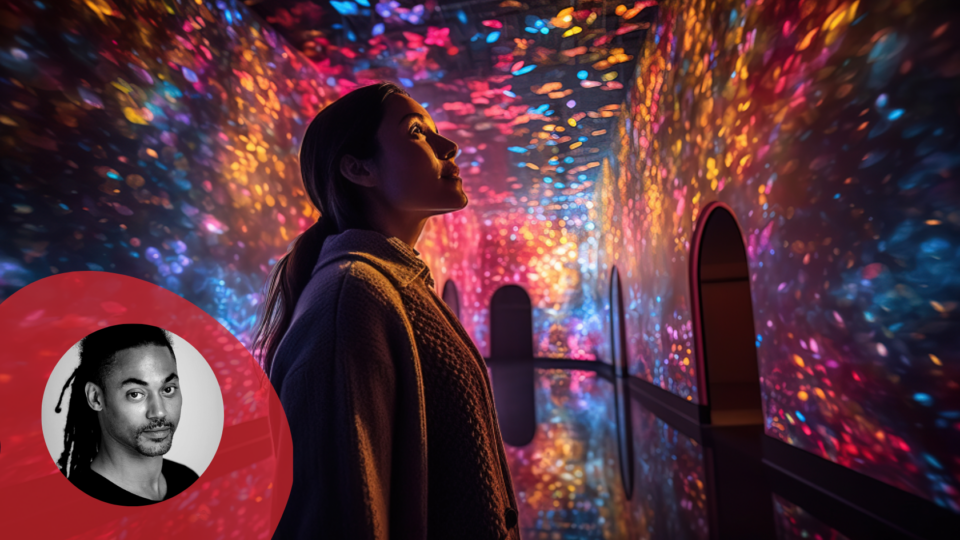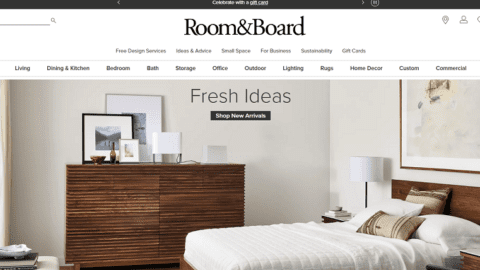The location-based experience marketplace is projected to grow to $12 billion by the end of 2023, clearly demonstrating an ever-increasing appetite for experiences. However, with so many on offer, how can brands ensure they are using the physical space effectively, connecting with customers, and evoking feelings consumers will never forget?
Present-day tech advancements, as well as consumer demand, provide an opportunity for brands to seize the moment, increase footfall and fend off online competition. Consumers expect brands to develop exciting and unexpected new narratives in their physical spaces, demonstrating their ethos and personality tangibly.
Experiences are More than Just the Physical Space they Occupy
Visual tech and spatial experiences have become more popular since the pandemic. Being separated from loved ones boosted digital adoption across age groups as people were forced to find new ways to stay in contact and create emotional memories without being in-person. Fulfilling these emotional needs resulted in a shift of attitudes toward tech-driven experiences. Brands must look at how to capitalise on this or risk losing out to more agile competitors.
Individuals are increasingly recognising the significance of spaces that bring people together and allow them to share emotions. Immersive exhibitions and spaces offer a unique opportunity to fulfill these needs, transcending traditional art and entertainment to become vehicles for mental and emotional restoration.
Advertisement
A Soft Sell
Brands must recognise the power of immersive experiences in shifting perception and fostering strong emotional connections. These spaces become more than mere marketing tools; they become transformative environments that cultivate a sense of well-being and offer individuals a reason to venture out and engage with the world around them.
Entering a physical store connects the consumer with a brand, in turn increasing brand loyalty. To enhance the physical experience, technologies like projection mapping, large-scale screens or augmented reality (AR) can draw the consumer in even further. The addition of physical and shared technologies like lighting, sound and visual projections can tell a story, making the space an extension of the brand, whether it’s a permanent or pop-up installation.
Take the Beyond the Road: A Journey Through Sound and Space as an example. It is a mesmerising realm where music and spatial design intertwine. Curated by the visionary minds behind Punch Drunk, it brought together a diverse range of artists, including Michael Kiwinaku and Danny Boyle.
The exhibition transforms Unkle’s album into a multidimensional experience, featuring 20 seamlessly woven installations. Visitors get to curate their own unique album as they explore, with each room offering a different song. This is a mind-bending audio-visual journey that many culture focused brands could replicate to capture audiences’ hearts and minds.
The marrying of physical and digital experiences is more important than ever. You only have to look at how courses like Design for Performance & Interaction at UCL and Spatial Narrative Masters at Central St Martin’s, a renowned arts and design college, have evolved to include technologies such as AR, projection, large-scale screen and interactive technology.
Technology paired with scientific insight allows for elevated experiences that strike emotional tones. These experiences can be tailored even further to ensure the event is unique for each person, creating hyper-personalization and evoking high levels of engagement from attendees.
Make Insight your North Star
Brands that have nailed their message have the chance, with tech, to distill it into experiences. Take LEGO for example. The brand launched an experiential retail space in New York, inviting people to play in an interactive ‘Brick Lab’. Creating an immersive store has provided an opportunity for LEGO to push and promote its existing brand values of play and nostalgia.
Other shared experiences brands can take note of are NXT: An Immersive Adventure into Technological Marvels and Shifting Proximities: Exploring the Fluidity of Perception.
NXT showcases the ingenious use of space and cutting-edge technologies. It mesmerises audiences with stunning laser installations as well as immersive wonders. With a limited reliance on screens, NXT employs physical light and sound to create an experiential landscape that constantly surprises and engages. From small-scale wonders to expansive environments, this exhibition leaves you in awe of human creativity and technological innovation.
Shifting Proximities, on the other hand, is a groundbreaking exhibition that delves into a world of perceptual transformation. This immersive experience challenges the notion of fixed realities and explores the fluidity of perception. Through a combination of innovative installations, sensory illusions and interactive elements, it challenges you to question your senses and embrace the ever-changing nature of our perceptual landscape. It is a mind-bending exploration of reality.
In all of this, remember that experiences must be insight-driven to ensure they connect with the right people and deliver what is needed — whether that’s a feeling or simply an excuse to post on Instagram. Spend time to truly understand the consumer, their desires and how best to communicate with them. If brands partner with artists, individuals and agencies who are clearly aligned with their tone of voice, it’s an easy way to convey a brand’s value to consumers. This then allows consumers to make an informed decision on whether to invest in the brand or not.
No matter whether a brand is a household name or a startup, this powerful combination of positioning, tech and insight can catapult an experience to success. These last two examples, Future Shock: Where Classic Meets Experimental and Universal Everything: The Intersection of Art and Interactivity, exemplify the many possibilities brands can tap into.
The Future Shock exhibition breaks boundaries and challenges conventions with its curated selection of classic and experimental immersive installations. It strikes a balance between highbrow art and accessible experiences, making it an inclusive space for all. Using film pieces front and centre, it seamlessly blends physical and digital elements, giving audiences a diverse range of exhibits that push the boundaries of perception and leave them with a sense of wonder. UVA (United visual Artists) featured standout exhibits that I’ve seen installed at other exhibits, so please look out for them.
Universal Everything’s collection of work was an absolute must-see for those seeking an otherworldly experience. It has garnered a devoted following of enthusiasts, having captivated audiences for years with a mesmerising blend of interactive installations. From mind-bending visuals to captivating soundscapes, it transcends the ordinary and invites audiences to immerse themselves in a realm of boundless imagination.
Experiences will Grow Stronger
Leading brands like Apple are pre-empting the future of customer experience and have released headsets allowing consumers to view their digital assets in the real world. This won’t detract from physical spaces, and brands will have the ability to immerse the consumer in that brand journey or message wherever they are.
As the desire for experiences grows, brands must focus on creating unforgettable narratives that will evoke deep feelings. By firstly knowing what they stand for, and secondly understanding how to utilise the right technology, brands have an infinite canvas for new creation — one that allows us to experience our existing world in new ways: that constantly evolves; that shows us something new about familiar spaces and sparks our imaginations about what’s possible in the world we live in.
Alex Lambert is a multi-award-winning Creative Director at Happy Finish, a global creative tech production agency working at the intersection of content design, emerging technology, and immersive storytelling. He has over 25 years of experience in digital creative fields and believes in the power of technology to help express emotions, understand each other and experience more — both collectively and as individuals. Lambert works primarily on eliciting emotion through technology as well as looking at user journey and experience in spatial experiences. Whether this is purely digital through means such as VR and AR or a combination of physical and digital, he believes curating narrative is the key to connection. His past and present clients include Nike, PVH, Mattel, Marks & Spencer, Procter & Gamble, Selfridges, Honeywell and many more. Outside of work, Alex has recently launched, BXRN to focus on raising BAME representation and knowledge in XR.









